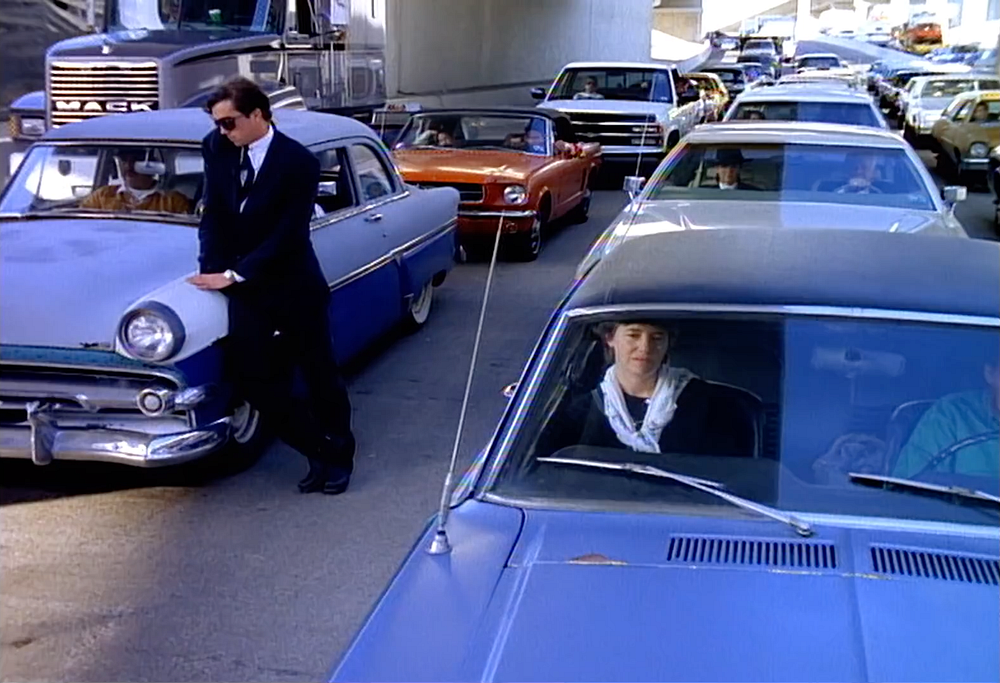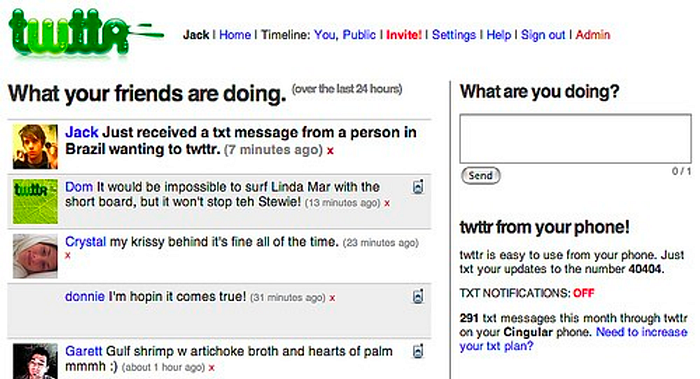

No exit — every feed is a traffic jam
source link: https://uxdesign.cc/no-exit-every-feed-is-a-traffic-jam-a5b091e8d3c2
Go to the source link to view the article. You can view the picture content, updated content and better typesetting reading experience. If the link is broken, please click the button below to view the snapshot at that time.

No exit — every feed is a traffic jam
Infinitely scrolling down alternative feeds is getting us nowhere. To reinvent social media, we must imagine new socials.

In the past few years, we’ve been experiencing a rough fallout from our prolonged honeymoon with social media. The imminent decline of Facebook and the chaos in Twitter opened the appetite for something different. Many of us turned our backs on the X and launched into a promiscuous rebounding period with multiple partners (Mastodon, Bluesky, Threads, even LinkedIn…). Much has been written against big tech and the social dilemma, in praise of decentralized and open source infrastructures, and more recently about the inevitable growing pains of new emerging networks. However, the following words will attempt to address the elephant in the room…
The feed.
We’ve been scrolling down through reverse chronological lists at least since we first opened an email inbox. It makes sense, it’s efficient, it emphasizes what’s new, and it directly reflects how data is stored technically behind the scenes. Online journalism adopted the format for news. Blogging made us follow each other’s posts in a similar fashion. For a while we used something called RSS to curate and aggregate multiple sources in one list, again in reverse chronological order. These “RSS feeds” were the inspiration for Facebook’s 2006 personalized “news feed” which was originally both introduced and perceived as a feature for stalkers. Feeds were organic to Twitter, where from day one you could “follow” public tweets from anyone without even having to “friend” them. For the following decade and a half, almost every social media service has made the feed a central feature. Today almost all of them are powered by algorithms, with publish-time being a prominent yet not the only ingredient in our infinitely-scrolling media diet. At this point, we’ve been force-fed for so long that it seems we have lost our sense of taste.

Single Occupant Vehicles
While Facebook’s news feed and mini-feed initially looked more like today’s notification lists, Twitter’s news feed crystalized the design pattern pretty much from the get-go. As early as 2006 (back when it was still called twttr.com), the site crystalized the design pattern of the feed as a list of posts (tweets) wrapping the content with a profile image, a username, and a time stamp (mostly in the time-ago format).

Twitter’s simplicity was ridiculed at first, but it wasn’t too long before anything dressed with a small profile image and a username, immediately looked like user-generated content (UGC). The iPhone launched in 2007 and fit that model perfectly — a personal device with a small vertical screen made for scrolling and for typing (short) text messages and for posting pictures. This 0-sum-game design pattern has stayed with us ever since — anchoring content with singular identity — you post what you are, since you are what you post, just keep on posting to grab the best spot at the top of the feed-chain.
Open every social media platform on any device, and there you have it. Faces lifelessly staring from the front windows of their posts. Their license plate bare their usernames. Every second since they last budged is counted. Somehow, it seems like every car is only moving backwards as traffic infinitely scrolls. The vehicles are lined bumper to bumper blocking the full width of the lane each carrying only one single passenger. The algorithms pit one driver against the other, encouraging each to cut the line in an endless feedback loop of engagement/enragement.
It’s time to face it, your feed is a traffic jam.
Beating traffic
Doom-scrolling feeds of user-generated posts have become almost synonymous with social media. This wasn’t always the case, and this is still not always the case. Blogging was indeed an early sign of user-generated content and so-called Web 2.0, but so were wikis. While blogs celebrated individual voices, wikis in general and specifically Wikipedia celebrated the choir. A direct descendant of the free and open-source software movement, Wikipedia inherited both the strengths and weaknesses of its collaborative model. As the old saying goes, “Wikipedia doesn’t work in theory, only in practice.” Yet even today, despite its theoretical and practical shortcomings Wikipedia remains an astonishing looming tower of networked collaboration.
Collaborative real-time editing tools such as Google Docs are not the only facet of our online life inspired by the wiki collaboration model. In 2004 OpenStreetMap.org (OSM) launched as a wiki of maps, licensed freely and continuously edited and maintained by a huge global community. Beyond the individual contributors, many governments, global development and humanitarian organizations as well as big tech giants (Apple Maps, Bing Maps, Uber, Facebook, Mapbox and Pokémon Go among countless others) both depend on and contribute to OSM’s geographic data.

While the feed places us inside single occupant vehicles stuck in a 1 dimensional traffic jam, Wikipedia and OSM represent a competing social and environmental model. We find ourselves together exploring multidimensional environments that rather than focus on individual contributions, depend much more on how we collaboratively nurture and maintain the commons.
Let a thousand cursors bloom
Before you rush to label me as some starry-eyed Gen-Xer that has been cryogenically frozen since 2007, spouting some outdated techno-utopian commons-based-peer-production bullshit, let’s examine some of the technologies we truly depended on during the pandemic. It surely was not our social media feeds, which in the meantime devolved into an infinitely scrolling chain accident, further detaching us from reality. Instead, we turned to other types of social software for real-time communication (think Zoom) and collaboration (think real-time collaboration platforms such as Miro). These platforms center on what we make together, whether it is real-time conversations, that mostly evaporate without leaving a trace, or collaborative environments that we build and maintain together.
Multi-cursor action in Miro.comHaving multiple cursors silently buzz around your screen is no longer an uncommon exotic experience. These emerging design patterns and social interactions are not user-centric in the traditional sense. In a way they are more digital-environment-centric* and focus on the social experience of nurturing and maintaining it together. Unlike the feed, these map-like interfaces do not dictate a unified navigation directionality. Instead, they allow attention to fluctuate dynamically as the content evolves collaboratively (with loose-attribution).
To conclude, let me clarify that this should not be read as a binary argument against linear individualistic feeds and for multi-cursor collaborative environments. Yet, with too many people still advocating that “Web 3.0” should double down on individual ownership, I do believe there’s room to present bolder attempts that truly challenge the dominant models of trafficking individual content production through congested social media feeds. The internet is still an amazing social lab, let the lab rats out of the scroll-wheel, let the drivers out of their cars; let’s use this opportunity to once again reinvent the social.
Recommend
-
 57
57
Introduction When I was starting out in looking for alternatives to migrate my blog as it was previously in Wix. ...
-
 3
3
Raspberry Jam Thank you for your interest in joining the Raspberry Jam community! Due to the coronavirus pandemic, we are currently not publishing Raspberry Jam events. In the m...
-
 12
12
Matthew Miner Global Game Jam 2017 January 31, 2017 Here’s a game I made for this year’s Global Game Jam. For...
-
 14
14
in which a game jam is recounted further This is the second part continuing my previous post about creating the game
-
 8
8
in which a game jam is recounted This past weekend I just finished competing in the Lisp Game Jam 2018. While...
-
 3
3
This jam is now over. It ran from February 1st 2020 at 2:00 PM to March 1st 2020 at 2:00 PM.
-
 9
9
Game Jam Level Up!高鸣 蜡烛人挚友数字时代的民间手艺人“Level U...
-
 3
3
GMTK Game Jam 2020 Retrospective: But First, Coffee Hey, if you didn't already know, I'm currently working on an open world stealth exploration game called Farewell...
-
 7
7
Matthew Miner Global Game Jam: Fog of War February 21, 2021 One challenge I tackled for our
-
 12
12
Home ...
About Joyk
Aggregate valuable and interesting links.
Joyk means Joy of geeK